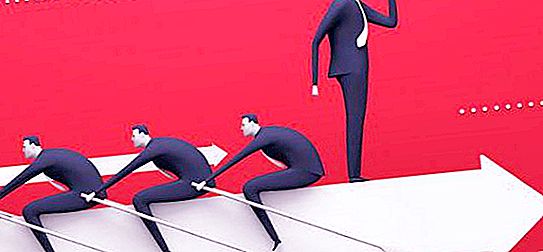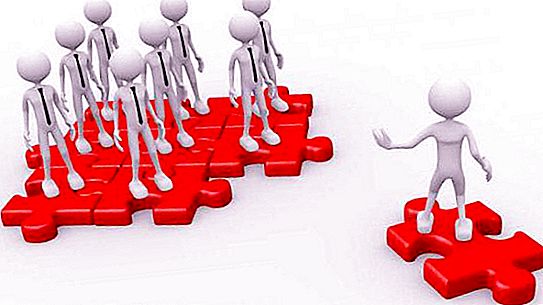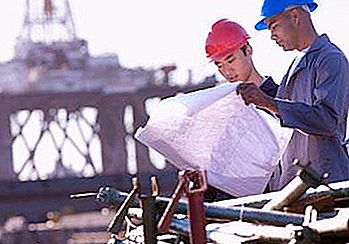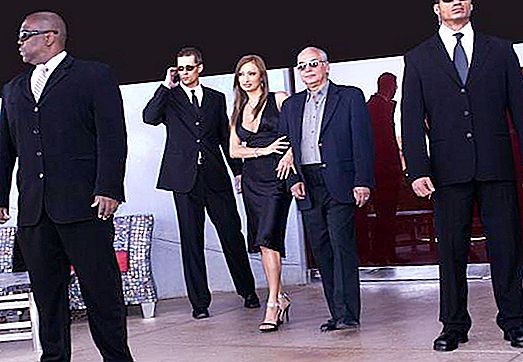Video: What is Line Function & Staff Function ? Urdu / Hindi 2024, July
Each organization has its own organizational structure, which is a framework within which issues are solved about the distribution of tasks, the use of company resources and the coordination of the work of existing units.
Factors affecting the formation of the organizational structure
- The size of the organization. Large enterprises have a more complex structure of subordination than small ones, in which one manager is enough to manage.
- Age of organization. Every year the structure of the enterprise becomes more complicated.
- Strategy and objectives. A significant impact is exerted by the goals and objectives that are set for the leader and subordinates.
- Staff. The organizational structure depends on the leadership qualities and activities of each employee.
- The direction of the company. An enterprise that provides one service (for example, a hairdresser) needs only one manager to organize normal work, but a large plant that produces several types of products needs a more complex organizational structure.
- Culture and environment. National culture and mentality.
- Management style. It is authoritarian or democratic.

Brief description of organizational structures
- Linear - there is a direct impact of the leader on subordinates. It has all the functions of managing the activities of the company. The leader in linear structures independently answers all questions regarding the productive work of system links.
- Functional - it is characterized by the subordination of functional managers to a linear, on which the overall management of the organization is entrusted. In addition, he is responsible for all decisions made. There is a specialization of functional managers depending on the managerial functions that they perform.
- Linear-functional (linear-staff). This structure is characterized by the fact that the organization has linear and functional leaders. The first work on the principle of one-man management. The latter manage the work of the departments. The main tasks are carried out by the heads of linear functional units, which are subordinate to the main line chief.
- Matrix - the project manager can manage subordinates of any department. After the work on the project is completed, the performers return to their units.

Let us consider in more detail who the line managers are, what functions and tasks are assigned to them. We also discuss what are the advantages and disadvantages of such an organizational structure.
Line managers: the essence
Line managers - these are the leaders of organizations or departments that are engaged in the main activities of the enterprise. They are responsible for the implementation of the goals that the company faces.
Line managers are the dominant faces of enterprises. The necessary information is provided to them by direct subordinates. On the basis of it, they make decisions and issue appropriate orders.

In the linear-functional organizational structure, the line manager plays a slightly different role. His authority is limited to decision making. That is, line managers are bosses who work on the principles of one-man management, but managers perform certain tasks. As a result, the quality of decisions is significantly improved, because the chief boss does not need to follow the heads of departments.
Line Manager Functions
- Setting the main goals and objectives of the organization and monitoring their implementation.
- Creation of an efficiently working team: they evaluate staff productivity, participate in the selection of new employees, conduct interviews, make decisions on dismissal, and make up a work schedule.
- Control discipline of employees.
- Ensuring staff development, organizing training, encouraging and punishing.
- Motivation of employees, assessment of the performance of each person.
- Formation and maintenance of corporate culture, conflict resolution.

Tasks of line managers
- Assisting the company in achieving its goals.
- Search for qualified employees for the enterprise who are interested in working for the result.
- Effective use of knowledge and experience of employees.
- Improving the motivational system.
- Improving the system of employee training, timely training.
- Creating a favorable climate in the organization.
- Planning promotions and other promotions.
- Activation of creative activity of workers.
- Bringing to perfection the methods for evaluating the work of personnel
- Creating decent working conditions for employees.

Line manager performance criteria
Not every boss can become a worthy leader. Effective work on the organization of the company is everyday work. Line managers are people with certain competencies. Their effectiveness can be estimated using the following parameters:
- The result of the main activities of the organization.
- The presence of the authorities of the appropriate motivation. The manager must regularly support and develop his desire to work further.
- Developing competencies for working with staff. The leader should strive to delve into all the intricacies of managing employees of his organization or the unit entrusted to him.
- The ability to form subordinates' commitment to a common main goal.
The main competencies of the head, ensuring the effective functioning of the organization
- Significant professional experience (skills and abilities in solving various professional problems).
- Leadership (helps to form a worthy team and inspire it to achieve its goal).
- Effective communication and interaction with employees (knows how to argue their point of view and correctly expresses their thoughts).
- Planning and coordination of work (planning is extremely important to achieve a good result).

Linear Organizational Benefits
- Unity of subordination (all employees report to one boss);.
- The full responsibility of each employee in accordance with their workplace.
- The simplicity of the system, since all powers and responsibilities are clearly distributed.
- Decisions are made promptly.
- Creating the necessary discipline in the team.
Linear Organizational Disadvantages
- The line manager may not be competent in all areas.
- The rigidity of the system and the complexity in adapting it to changing conditions.
- It focuses on a small amount of information transmitted between hierarchy levels.
- Restriction in the initiative of employees of lower levels.
- With an increase in the scale of production, difficulties arise with the division of labor.
So, line managers - this is the main link in the linear structure of the organization, which is entrusted with the task of achieving the organization's main goal and who are responsible for the implementation of the tasks. On the one hand, such a system greatly simplifies enterprise management, on the other hand, it slows down its development and does not allow it to quickly adapt to changing environmental conditions.






